Sankranthi is a festival celebrated in the South part of India. The rice is harvested and a special dish made by rice is offered to the God. It is a popular south Indian dish which is loaded with nutrients. It is prepared in two forms, one is the spicy pongal which mainly has rice, dal, spices and the other is sweet pongal which mainly has rice, dal and jaggery in it.
The festivals of harvest is not only to symbolize agricultural significance but also to load yourself with the essential nutrients required for proper functioning of the body according to the season. The ingredients added in pongal helps to detox, cleanse and also improve the metabolic activities. In winter, the metabolism of an individual reduces and also the gut weakens. Thus, easy to digest foods are the best to eat. Recent studies have shown that long-grained white rice has a lower glycemic index when compared with the short-grained rice. Thus, the long-grained rice is easy to digest.
Read our blog – Why Desi Cow Ghee Should Be Your BFF This Winter
SPICY PONGAL (KHARA PONGAL)
The spicy pongal has the goodness of rice, dal, ghee and spices which not only adds on to the taste of the dish but is also a healthy dish. The spicy pongal is served with sambar or coconut chutney. Let us get started with the preparation of famous Khara pongal (spicy pongal).
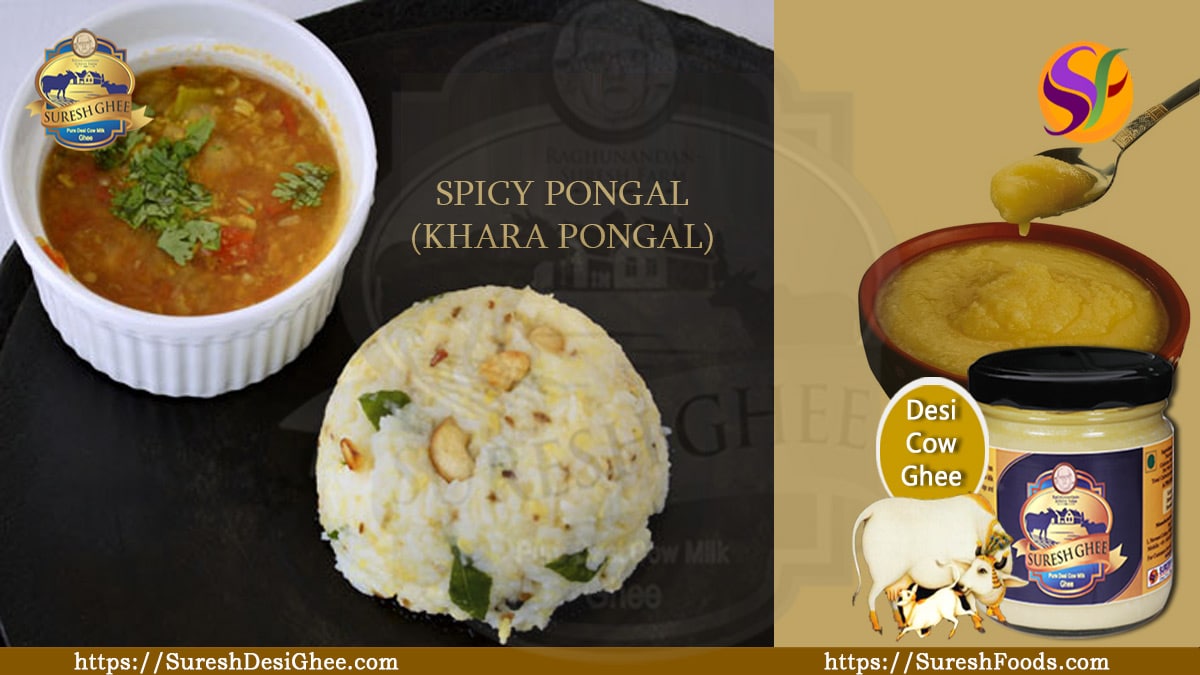
Ingredients
- Rice – 1 cups
- Moong dal – ½ cups
- Cumin powder – 1 tsp or cumin seeds – ½ tsp
- Black pepper powder – 1 tsp or black peppercorns – ½ tsp
- Green chilli – 3-4 (according to taste)
- Turmeric powder – ¼ tsp
- Ginger – 1 tsp
- Ghee – 2 tbsp
- Oil – 3 tsp
- Salt to taste
Directions
- Wash and soak rice and moong dal in water for 15 minutes.
- Drain off the water and add 6 cups of water in a pressure cooker. Then add salt according to your taste. Pressure cook it until it is cooked well and mashed.
- Heat a tbsp of desi cow ghee and oil in a vessel over medium flame. Add finely chopped ginger, cumin seeds, finely chopped chillies, black pepper powder or black peppercorns, turmeric powder, and finally curry leaves.
- Take another pan and pour a tbsp of ghee and add some cashew nuts. Fry them until the colour gets changed to golden brown.
- Add all these spices and cashews into the cooked pongal and mix well.
- Don’t over mix the mixture as it may form lumps.
- Your khara pongal (spicy pongal) is ready serve!
SWEET PONGAL (SAKKARE PONGAL)
Sweet pongal is an easy sweet dish which tastes amazing. This mouth watering sweet is offered to god in the form of gratitude. Let us get started with the preparation of sweet pongal.

Ingredients
- Rice – 1 cup
- Moong dal – ½ cup
- Ghee – ¼ cup
- Cashew nuts and raisins – ¼ cup
- Jaggery – 1 ½ cup
- Cardamom pods – 4
- Milk – 3 cups
- Water – 3 cups
Directions
- Take a pan and heat one tsp of ghee and add moong dal to it. Slow roast the moong dal until the colour changes to pinkish. Do not over roast it, that it turns brown. Take them to a plate and keep it aside.
- To the same pan add two tsps of ghee and fry the cashew nuts and raisins until it it turns golden brown. Keep it aside.
- Take rice and moong dal in a vessel or a pressure cooker and add water and milk to it. Give it a nice mix. If you are using pressure cooker, cook it until the rice and dal gets mashed (5-6 whistles).
- Take another vessel and add jaggery with a cup of water. Stir it well until the jaggery melts. Get the solution to a rolling boil and simmer it for about 5 minutes on a low flame. Let the syrup cool. (do not add jaggery to uncooked rice and milk as it does not let the rice to cook and also causes splitting of milk.)
- Add the cooked rice and dal to the jaggery syrup. Remember to cook it on a medium flame. Add ghee, cashews, raisins and cardamom pods; give it a nice stir.
- Cover the vessel and let it cook well and absorb the richness of sweetness for about 10 minutes.
- Drizzle some ghee on top of the sweet pongal and here it is ready to serve!!
#Rice and moong dal saga
Rice and dal are a good example of the complete protein required for an individual.
Rice is a good source of energy as it has carbohydrates. It is also loaded with starch content, vitamins such as vit D, thiamine, riboflavin and fibre, iron, calcium as well. Moong dal has essential amino acids which your body fails to produce on its own. It is also a good source of antioxidants. It is loaded with potassium, soluble fibre called pelvin, and magnesium. These combinations were not just made to increase the taste of the dish but also with the thought of enhancing the nutritional value of the food consumed according to the varying seasons.
Ingredients:
- 2 cups of rava / semolina
- 1/2 cup of moong dal cherupayar / paasi paruppu
- 1 tsp of black peppercorns
- 1 tsp of jeera / cumin seeds
- 1/4 cup + 2 tbsp of ghee / clarified butter
- 1/4 tsp of hing / perungayam / asafoetida
- 10-12 cashew nuts halved
- A few curry leaves
- Salt to taste
Instructions:
- Prepare the moong dal with 1.5 cups of water until it’s mushy and soft. Mush it further with a fork or potato masher till no more lumps appear. Utilizing a pressure cooker is the fastest method, and soaking the dal for an hour beforehand can be instrumental.
- Warm 2 teaspoons of ghee in a pan and add the pepper, jeera, along with cashew nuts. Grill and stir till the cashew nuts appear golden brown, then add the semolina.
- Try to stir on low heat for about 5 minutes till it initiates to transform color to a light brown.
- Add salt and hing at this stage. Stir well.
- Further, add the prepared moong dal. Mix to incorporate and lower the flame.
- For the time being, bring 2.5 cups of water to boil in another pan.
- Pour the boiling water into the rava-moong dal mixture. Stir well to incorporate.
- Then add the 1/4 cup of ghee.
- Stir well to combine, and in about 3-4 minutes, you will see the mixture thickens and leaves the sides of the pan.
Rava pongal is ready. Serve hot with gotsu, sambar, or chutney.
#Desi ghee
Ghee is a complete pack of health and taste. Adding ghee to the dish not only enhances the flavour and aroma but also provides health benefits. Ghee is loaded with fat soluble Vitamin A, D, E, K. It is also provides a good source of energy and also boosts immunity. It has butyric acid which helps in easy digestion of food. It is also considered as a sattvic food which promotes positive mind and better personal health. Consumption of ghee also acts as an anti-aging agent for the individual. It is also a detoxifying agent which removes impurities from the body. The consumption of ghee has much more benefits than you ever thought of. Leave back the myths of ghee and feel free to consume ghee in your diet to relish its benefits. But always remember to consume ghee in moderate quantity. If over consumed it can lead to obesity or weight gain and heart problems etc.
Read our blog – Ghee- Why is it an important part of your diet?
#Spices
Black pepper
Sankranthi is a festival celebrated in the South part of India. The rice is harvested and a special dish made by rice is offered to the God. It is a popular south Indian dish which is loaded with nutrients. It is prepared in two forms, one is the spicy pongal which mainly has rice, dal, spices and the other is sweet pongal which mainly has rice, dal and jaggery in it.
The festivals of harvest is not only to symbolize agricultural significance but also to load yourself with the essential nutrients required for proper functioning of the body according to the season. The ingredients added in pongal helps to detox, cleanse and also improve the metabolic activities. In winter, the metabolism of an individual reduces and also the gut weakens. Thus, easy to digest foods are the best to eat. Recent studies have shown that long-grained white rice has a lower glycemic index when compared with the short-grained rice. Thus, the long-grained rice is easy to digest.
Read our blog – Why Desi Cow Ghee Should Be Your BFF This Winter
SPICY PONGAL (KHARA PONGAL)
The spicy pongal has the goodness of rice, dal, ghee and spices which not only adds on to the taste of the dish but is also a healthy dish. The spicy pongal is served with sambar or coconut chutney. Let us get started with the preparation of famous Khara pongal (spicy pongal).
Ingredients
- Rice – 1 cups
- Moong dal – ½ cups
- Cumin powder – 1 tsp or cumin seeds – ½ tsp
- Black pepper powder – 1 tsp or black peppercorns – ½ tsp
- Green chilli – 3-4 (according to taste)
- Turmeric powder – ¼ tsp
- Ginger – 1 tsp
- Ghee – 2 tbsp
- Oil – 3 tsp
- Salt to taste
Directions
- Wash and soak rice and moong dal in water for 15 minutes.
- Drain off the water and add 6 cups of water in a pressure cooker. Then add salt according to your taste. Pressure cook it until it is cooked well and mashed.
- Heat a tbsp of desi cow ghee and oil in a vessel over medium flame. Add finely chopped ginger, cumin seeds, finely chopped chillies, black pepper powder or black peppercorns, turmeric powder, and finally curry leaves.
- Take another pan and pour a tbsp of ghee and add some cashew nuts. Fry them until the colour gets changed to golden brown.
- Add all these spices and cashews into the cooked pongal and mix well.
- Don’t over mix the mixture as it may form lumps.
- Your khara pongal (spicy pongal) is ready serve!
SWEET PONGAL (SAKKARE PONGAL)
Sweet pongal is an easy sweet dish which tastes amazing. This mouth watering sweet is offered to god in the form of gratitude. Let us get started with the preparation of sweet pongal.
Ingredients
- Rice – 1 cup
- Moong dal – ½ cup
- Ghee – ¼ cup
- Cashew nuts and raisins – ¼ cup
- Jaggery – 1 ½ cup
- Cardamom pods – 4
- Milk – 3 cups
- Water – 3 cups
Directions
- Take a pan and heat one tsp of ghee and add moong dal to it. Slow roast the moong dal until the colour changes to pinkish. Do not over roast it, that it turns brown. Take them to a plate and keep it aside.
- To the same pan add two tsps of ghee and fry the cashew nuts and raisins until it it turns golden brown. Keep it aside.
- Take rice and moong dal in a vessel or a pressure cooker and add water and milk to it. Give it a nice mix. If you are using pressure cooker, cook it until the rice and dal gets mashed (5-6 whistles).
- Take another vessel and add jaggery with a cup of water. Stir it well until the jaggery melts. Get the solution to a rolling boil and simmer it for about 5 minutes on a low flame. Let the syrup cool. (do not add jaggery to uncooked rice and milk as it does not let the rice to cook and also causes splitting of milk.)
- Add the cooked rice and dal to the jaggery syrup. Remember to cook it on a medium flame. Add ghee, cashews, raisins and cardamom pods; give it a nice stir.
- Cover the vessel and let it cook well and absorb the richness of sweetness for about 10 minutes.
- Drizzle some ghee on top of the sweet pongal and here it is ready to serve!!
#Rice and moong dal saga
Rice and dal are a good example of the complete protein required for an individual.
Rice is a good source of energy as it has carbohydrates. It is also loaded with starch content, vitamins such as vit D, thiamine, riboflavin and fibre, iron, calcium as well. Moong dal has essential amino acids which your body fails to produce on its own. It is also a good source of antioxidants. It is loaded with potassium, soluble fibre called pelvin, and magnesium. These combinations were not just made to increase the taste of the dish but also with the thought of enhancing the nutritional value of the food consumed according to the varying seasons.
#Desi ghee
Ghee is a complete pack of health and taste. Adding ghee to the dish not only enhances the flavour and aroma but also provides health benefits. Ghee is loaded with fat soluble Vitamin A, D, E, K. It is also provides a good source of energy and also boosts immunity. It has butyric acid which helps in easy digestion of food. It is also considered as a sattvic food which promotes positive mind and better personal health. Consumption of ghee also acts as an anti-aging agent for the individual. It is also a detoxifying agent which removes impurities from the body. The consumption of ghee has much more benefits than you ever thought of. Leave back the myths of ghee and feel free to consume ghee in your diet to relish its benefits. But always remember to consume ghee in moderate quantity. If over consumed it can lead to obesity or weight gain and heart problems etc.
Read our blog – Ghee- Why is it an important part of your diet?
Buy cow Ghee Online : Order Now. Free Shipping
#Spices
Black pepper
Black pepper is also known as the king of spices. It gives an amazing taste which enhances the flavour of the dish. Besides the taste it also has health benefits. They are – promotes weight loss, improves digestion and gives relief against cold and cough.
Cumin
Cumin is an essential spice added in the Middle Eastern cuisines. It is called jeera. Cumin has the ability to improve digestion, immunity and also cures respiratory problems.
Turmeric powder
Turmeric powder is the most essential spice and also a medicinal compound used in various cuisines. It is loaded with antioxidant, antibacterial, antifungal, antiviral, anti inflammatory, anticarcinogenic and antimutagenic and healing properties.
Ginger
Ginger is a spice and also a medicinal compound as it has antimicrobial property. It helps to lower cholesterol as it has antioxidant property. It also regulates blood pressure and blood sugar level.
#Jaggery
Jaggery is a superfood sweetener instead of sugar. It contains Vitamin B and minerals including calcium, zinc, potassium, phosphorus and copper. It has various health benefits like cleansing of body, improves digestion and also aids weight loss.
Read our blog – Health Benefits of Jaggery and Desi Ghee
#Milk
Milk is a nutritional-packed beverage which is loaded with Vitamin A, B1, B2, B12, D; chlorine, potassium and magnesium. It is a main source of calcium which strengthens the bones and teeth.
Preparing pongal is not much time consuming. Prepare spicy pongal and sweet pongal as both are loaded with proteins and carbohydrates. Rice, dal and ghee are the three main ingredients which has high amount of health benefits and also the spices/ jaggery which enriches the dish with its own nutritional benefits and taste as well. If you were wondering what to prepare for breakfast or lunch, then try this amazing pongal at home. Send us your valuable comments and we are waiting to hear from you. You can also buy desi cow ghee from our online store. Visit our website https://sureshfoods.com/ to know more.
Read more –

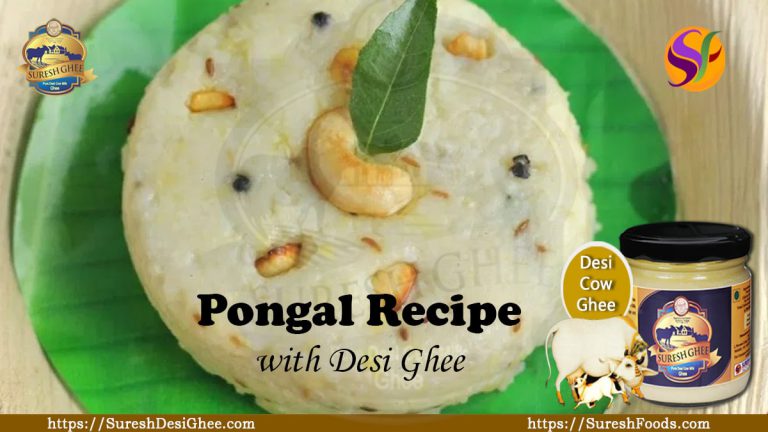
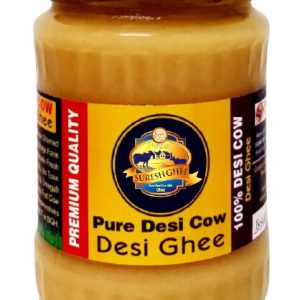
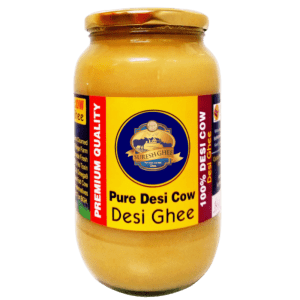
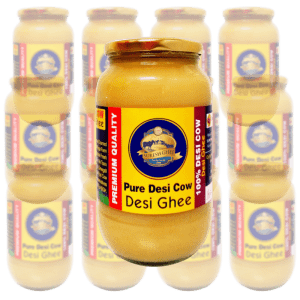
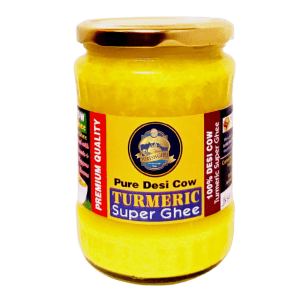
 WhatsApp us
WhatsApp us
Naveen m...